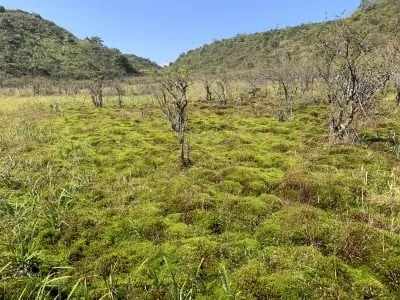
Ancient Alliances: How Plants and Microbes Team Up to Save Peatlands from Climate Change
2025-08-04
Author: John Tan
Peatlands Under Threat: A Climate Crisis
As climate change intensifies, peatlands—our planet's vital carbon reservoirs—are facing unprecedented threats from warming temperatures and increasing dryness. However, groundbreaking research reveals that these ecosystems may possess a hidden defense mechanism, thanks to an unexpected collaboration between woody plants and microbes.
Unveiling Nature's Defense: A New Study
Led by an international team, including scientists from the University of Bristol, a new study published in *Nature Communications* illustrates how, during periods of historic dryness, woody plants in a subtropical Chinese peatland enhanced the quality of organic matter and inhibited harmful microbial decomposition. This cooperation may have played a pivotal role in preserving carbon stores during critical periods when they were most at risk of being released into the atmosphere.
A Surprising Discovery about Plant and Microbe Interaction
According to lead author Dr. Yiming Zhang, Senior Research Associate at the University of Bristol, "Woody plants didn't just endure a drying climate—they actively contributed to resilience. Their presence made peat more chemically stable, prompting microbes to modify their metabolism and slow down carbon release. It’s an astonishing feedback loop that we hadn’t fully recognized before."
14,000 Years of Change Analyzed
Utilizing various scientific techniques, the research team reconstructed ecological changes over the last 14,000 years in the Zhaogongting peatland. They discovered that between 8,000 and 6,000 years ago, during a mid-Holocene drying event, woody plants began to flourish, outcompeting grasses and coexisting with mosses. This transformation altered the composition of peat organic matter, increasing resistant aromatic compounds and decreasing carbohydrates, thus creating a more resilient carbon pool.
Carbon Accumulation Peaks Amidst Drying
The research revealed that these plant and microbial changes significantly boosted carbon accumulation rates during the drying periods, achieving levels nearly three times higher compared to other times.
Implications for the Future of Peatlands
Co-author Prof. Rich Pancost, a Biogeochemist at the University of Bristol’s Cabot Institute for the Environment, stated, "Peatland vegetation is highly vulnerable to climate change. Our findings illustrate how alterations can greatly influence organic matter composition and its reactivity. This underscores the complex interplay between climate dynamics, ecological responses, and carbon cycling."
A Double-Edged Sword: The Limits of Plant-Microbe Cooperation
However, the study also emphasizes potential limitations. Dr. Zhang warns, "While the expansion of woody plants initially enhances carbon storage, there could be ecological thresholds that, if crossed, may shift peatlands to entirely different ecosystems, leading to renewed carbon release."
The Need for Continued Research
Further investigation is crucial to comprehend how peatland ecosystems react to climate-driven changes, especially in tropical regions and impacted landscapes. The Climate, Energy, and Carbon in the Earth System (CERES) team, led by Prof. Pancost, is currently exploring how carbon cycling and microbial dynamics operate in these vital, vulnerable ecosystems.

 Brasil (PT)
Brasil (PT)
 Canada (EN)
Canada (EN)
 Chile (ES)
Chile (ES)
 Česko (CS)
Česko (CS)
 대한민국 (KO)
대한민국 (KO)
 España (ES)
España (ES)
 France (FR)
France (FR)
 Hong Kong (EN)
Hong Kong (EN)
 Italia (IT)
Italia (IT)
 日本 (JA)
日本 (JA)
 Magyarország (HU)
Magyarország (HU)
 Norge (NO)
Norge (NO)
 Polska (PL)
Polska (PL)
 Schweiz (DE)
Schweiz (DE)
 Singapore (EN)
Singapore (EN)
 Sverige (SV)
Sverige (SV)
 Suomi (FI)
Suomi (FI)
 Türkiye (TR)
Türkiye (TR)
 الإمارات العربية المتحدة (AR)
الإمارات العربية المتحدة (AR)